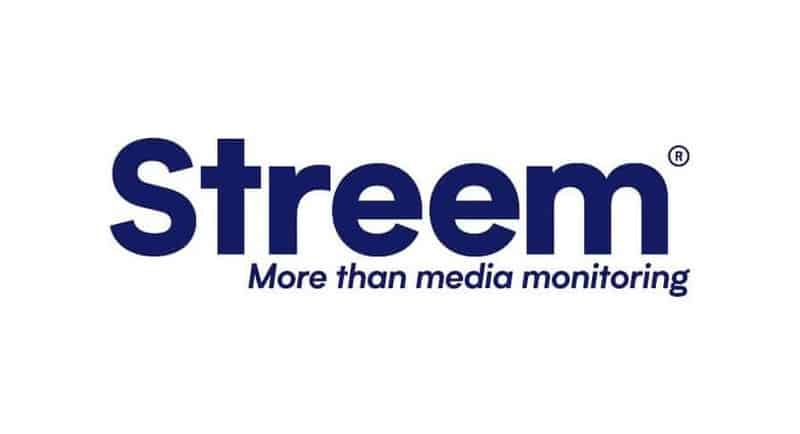Streem has revealed what the media was talking about during their coverage of the 2022 Federal Election campaign.
Data from the realtime media monitoring provider also revealed other key insights into the data behind the campaign that delivered a Labor government and a record crossbench.
Jack McLintock, Streem’s communications lead, said: “Saturday’s Federal Election was an earthquake for Australian politics, with the data behind it proving equally significant.
“A split in the issues most talked-about in traditional media compared to social media, and a closing of the gap by Anthony Albanese on Scott Morrison’s share of voice, hinted at the monumental outcome we saw unfold on Saturday night,” he added.
Morrison had the higher share of voice, but Albanese narrowed the gap
Streem’s data show that over the first few months of 2022, as the leaders were preparing for the Election campaign, Morrison unquestionably had a significantly larger media presence than Albanese, securing a 63% share of voice compared to Albanese’s 37%, for the period from 1 January until 21 May.
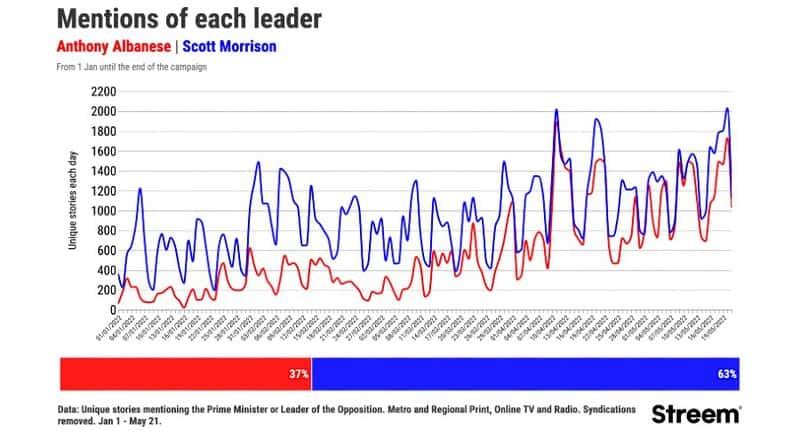
However, during the campaign, Albanese closed that gap considerably, down to a 54.5% share of voice for Morrison and a 45.5% share of voice for Albanese.
Throughout the campaign, Albanese on occasion had days with a higher media profile than Morrison, and were it not for his forced week in isolation with COVID, it is probable that the share of voice gap between the two leaders would have closed further.
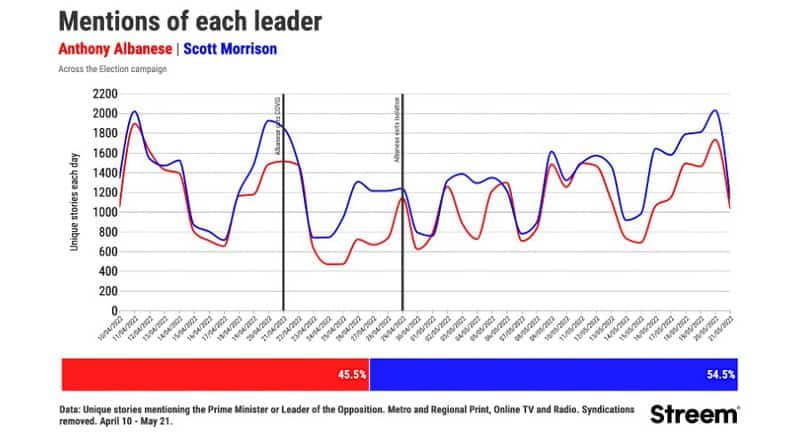
This tightening in the leaders’ share of voice was reflective of the media paying significantly closer attention to Albanese as polling day drew closer, elevating his profile and the electorate’s familiarity with him.
The ALP scored more coverage than the Coalition
While Morrison secured a higher level of coverage than Albanese during the campaign, Labor consistently outscored the Coalition on media coverage cumulatively.
The ALP and its frontbenchers scored a 52.8% share of voice during the campaign, compared to the Coalition and its frontbenchers, on a 47.2% share of voice.
Labor consistently scored more media coverage than the Coalition, except in the second week of the campaign, when the two major parties were much closer.
Labor stretched its lead in media coverage across the second half of the campaign, routinely achieving significantly more coverage than the Coalition.
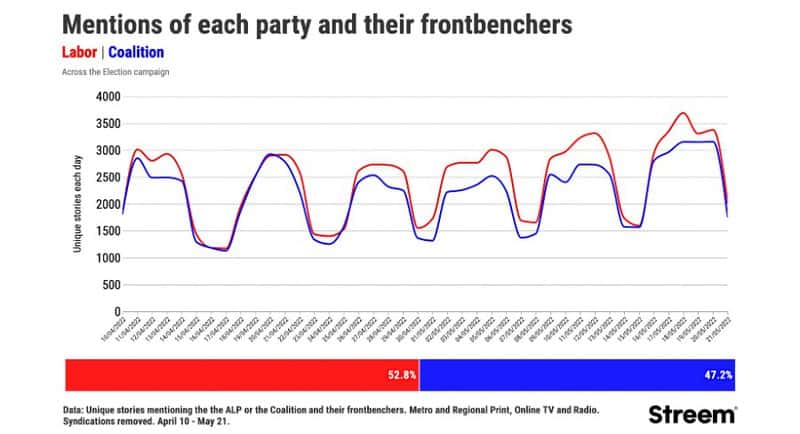
Teal seats the most discussed
The teal independent wave that swept through Sydney and Melbourne featured heavily in media coverage of the Election ahead of polling day, with the top three most-covered electorates all won by independents.
The electorate of Kooyong, won by Dr Monique Ryan from former treasurer Josh Frydenberg, was the most reported-on electorate throughout the Election campaign, by a considerable margin, with the Sydney electorates of Warringah and Wentworth the second and third-most covered, respectively.

Traditional and social media diverged on the most-discussed issues
While both traditional and social media agreed that Employment and the Environment were the two most significant issues of the Election campaign, their divergence on other issues of significance hinted at the unprecedented result we saw.
On social media, the Environment was the top issue by a considerable margin, followed by Employment, then Integrity and Corruption, then the treatment of women.
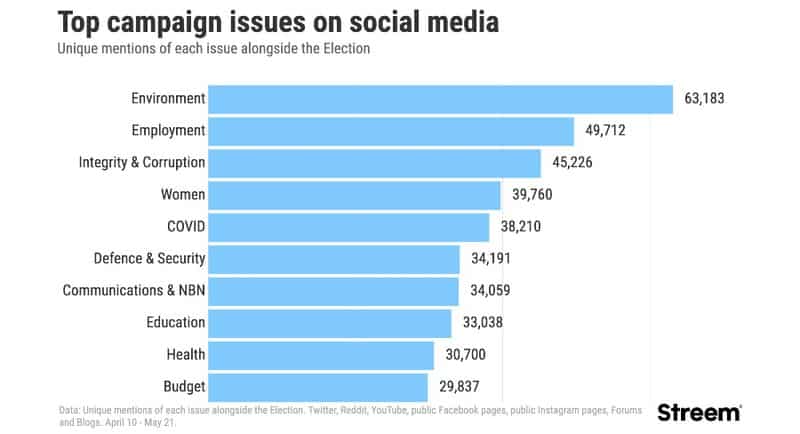
Employment was the top issue in traditional media coverage of the campaign, followed by the Environment, the Economy, and Health.
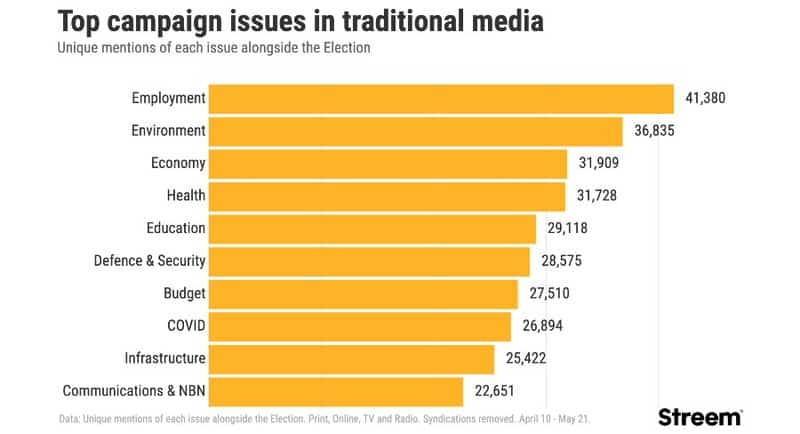
This divergence in issues of priority between social and traditional media foreshadowed the drivers of this Election outcome, with the issue more prominent on social media, such as Integrity and Corruption, the treatment of women, and the Environment, being key issues that drove victories for teal independents and the Labor party.
First debate tops campaign moments
The first debate between Morrison and Albanese was the top moment of the campaign, based on the number of mentions the event had on a single day in the campaign.
The Coalition’s announcement of its policy to allow people to use superannuation to fund a house purchase closely followed, with the news that China and the Solomon Islands had signed a defence pact the third most-covered moment.
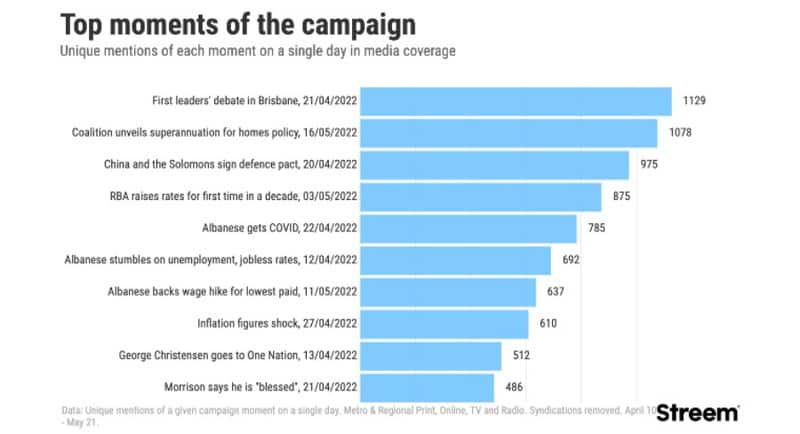
As Election night progressed, talk moved from a Hung Parliament to a Labor win
Throughout the Election campaign, commentators had consistently predicted a close outcome, one that may be difficult to call on the night.
But when looking at the outcomes most discussed on Election night television coverage, talk quite rapidly swung to a Labor victory.
During the 8pm hour, talk of a Hung Parliament was on top, but as results from Western Australia started being counted, discussion of a Labor win streaked away, and talk of a Hung Parliament melted away.
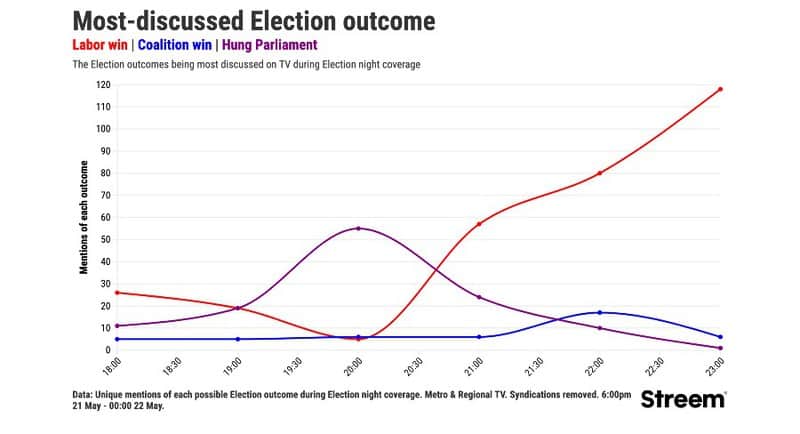
The Election replaced COVID as the top story, but will it hold?
For the two years prior to the Election campaign, the COVID pandemic was consistently the top story in the news, with its hold only broken occasionally by major news events such as the 2020 United States Presidential Election, and Russia’s invasion of Ukraine, in February this year.
The Federal Election campaign has, however, become the first topic to consistently rank above COVID in the news. Since the Election was called on April 10, it was consistently the top story in the news, with its seven-day average of media coverage ahead of COVID every day.
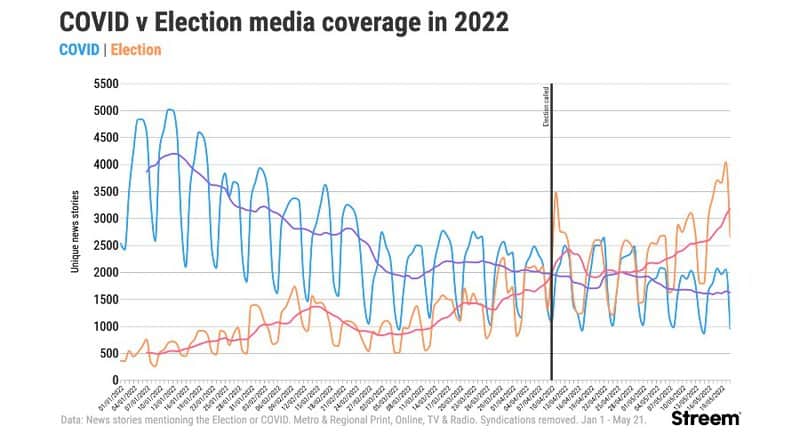
Will the Election outcome, delivering a change of government and a radically reshaped electorate, result in COVID being permanently banished from the top spot in the news? Time will tell.
Albanese’s COVID isolation proved a boon for his frontbench and Labor
When Albanese contracted COVID the day following the first debate, many people viewed it as a damaging moment for his campaign, given he would be ceding the media landscape to Morrison while in isolation.
While Albanese’s media coverage did drop during the week he was off the campaign trail, it proved a boon for Labor and their frontbenchers, with many of them seeing significant growth in their media profiles, and Labor’s overall media profile growing 5.4% compared to the week prior to Albanese contracting COVID.
The Coalition ultimately couldn’t take advantage of the media space ceded by Albanese during that week, with the overall media profile of them and their frontbenchers dropping 1.6%, and Morrison’s media profile falling by 14% compared to the week prior.
Online coverage comes out on top
The continuing rise and rise of Online news was further confirmed during the Election, with Online coverage of the campaign making up 44.5% of total media coverage of the campaign.
Radio and TV coverage were at around similar levels, making up 22.2% and 21.3% of total media coverage, respectively.
Print coverage was the fourth-most prominent type of media coverage during the Election, making up 12.1% of total coverage, according to the Streem data.
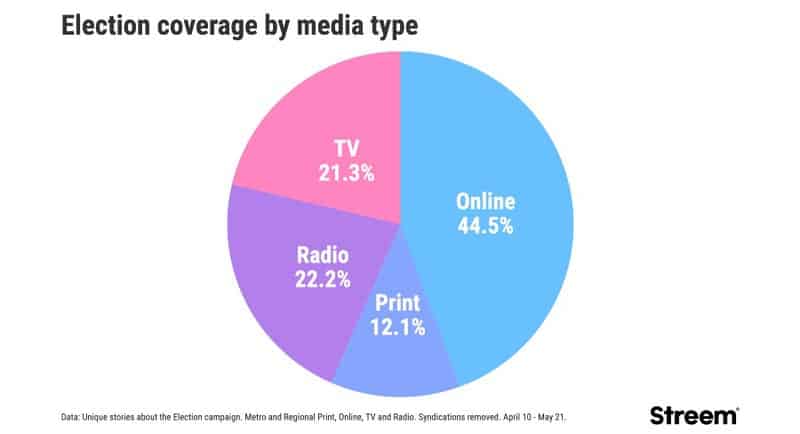
The comprehensive offering of data and services from Streem during the Election has helped to elevate the understanding of both its customers and the general public.
Instant Election Insights, a complimentary public dashboard providing realtime insights into Election media coverage, has been used by thousands of individual users across Australia, helping each of them better understand Election media coverage.
Data and insights from Streem has featured across many of Australia’s leading publications and broadcasters during the Election campaign, including in The Australian, The Australian Financial Review, the ABC, including its flagship political program, Insiders, Crikey, The New Daily, and others.
Streem’s data reached over 3.5 million Australians throughout the Election campaign, providing them with a deeper understanding of the data behind Election media coverage.
For Streem’s customers, the Election Daily Email Report service has provided them with a comprehensive daily report of Election coverage they need to be across, simplifying their effort to stay on top of the news that matters every day.
Streem’s Election Promise Tracker, available complimentary to Streem customers, kept them informed of who was promising what as the campaign unfolded.
Streem will be hosting a webinar on June 8 with four of Australia’s leading political insiders, Clive Mathieson, Eamonn Fitzpatrick, Annie O’Rourke and Ronald Mizen, to break down what communications and corporate affairs professionals can expect from the new Labor government and expanded crossbench.
“At Streem, we pride ourselves on ensuring our customers are comprehensively informed about the issues that matter to them. Our insights and data throughout the Election campaign, and our post- Election webinar with leading political insiders, offers a level of analysis into the Election and its outcome that is unmatched”, McLintock added.
